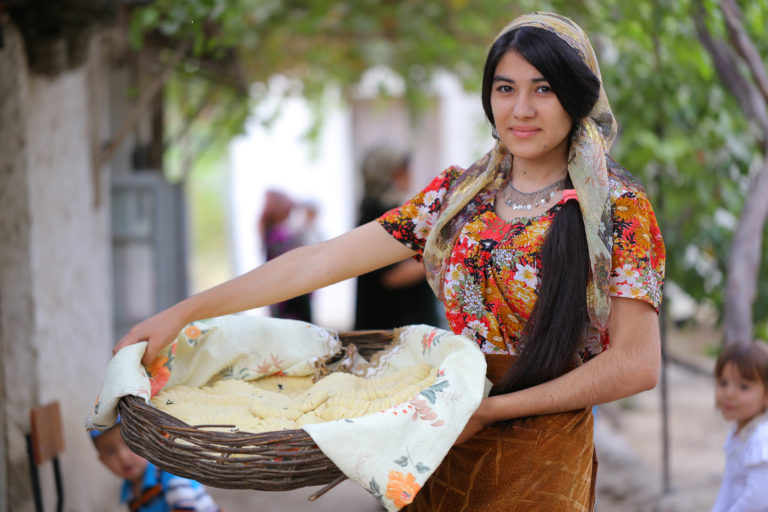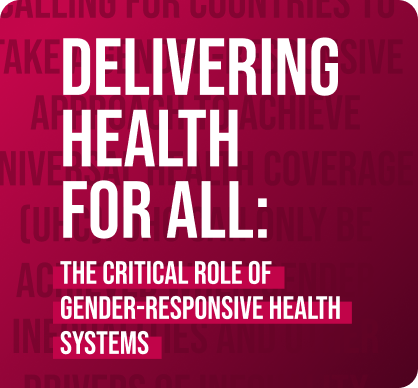Adolescents: 1.2 billion agents of change for improved nutrition

Teenaged girls and boys are an untapped resource for progress —they are influential agents of change for their own life and for the world, and a critical force in transforming global food systems for improved nutrition and overall health. But we need to work with young people in new and meaningful ways to achieve the ambitions of the Sustainable Development Goals.
Adolescence is an intense period of physical and psychological development1. This impressionable time presents a unique opportunity to instill positive health behaviours and empower girls and boys to act on their new heightened awareness of social issues which affect their lives2.
One of the most important health behaviours that must be addressed during this time is nutrition – Six of the top 11 risk factors driving the global burden of disease are related to diet. In this context, instilling positive eating behaviours are particularly important, because adolescents have increased nutritional needs. Children can gain up to 50% of their skeletal mass and 20% of their ultimate adult height during this period3, so consuming sufficient quantities of the right nutrients is essential. Unfortunately, adolescent diets are often nutritionally poor; low in fruits and vegetables and high in sugar, sodium, and added fat4. This is compounded in low-resource settings where most adolescents live and food choices are constrained by high levels of poverty and lack of access to nutritious food, especially among young women.
The poor diets of the estimated 1.2 billion adolescents in the world put this critical population at risk. Adolescents living in low and middle-income countries are affected by the multiple burdens of malnutrition, the increasing problem of overweight and obesity coexisting with continued high prevalence of underweight, micronutrient deficiencies and protein-energy malnutrition4. Nutritional status during adolescence affects not only their present and future health but, as parents, it affects the health of the next generation. For the 16 million babies born to adolescent mothers each year, their health is impacted by both their mother’s nutritional status and the age at which she conceived. In many countries, gender norms act to disadvantage adolescent girls, who often eat last and least5.

Tackling these challenges to address adolescent nutrition requires new approaches and partnerships. Specific gaps that must be filled include:
- Research: There is a lack of empirical evidence for interventions that effectively improve nutrition in adolescents. This research gap must be prioritized and addressed.
- Innovation: Adolescents don’t regularly interact with healthcare delivery systems and are therefore harder to reach. We should learn from other sectors that are developing innovative delivery mechanisms to reach, empower and mobilize adolescents. Social media, brands, phone networks and other highly visible consumer-facing organizations have a huge amount of data and knowledge in building strategies, ideas and messaging that will cut through and connect with girls and boys through channels that make sense to them.
- Meaningful Youth Engagement: Adolescence is a time when children develop their values, beliefs and voices. A time when they take on additional responsibility, push for independence and shape their views of their own future. When girls and boys are supported and encouraged by adults and each other, and when there are policies and services attentive to their needs and capabilities, they have the potential to break long-standing cycles of inequality, poverty and discrimination7.
Nutrition is inherently interconnected with other sectors so effective strategies will require working together to address the gender, socio-economic, cultural and food environments in which young people live. By working across sectors and generations, nutrition can accelerate progress toward improving school performance, economic development, maternal and child health, and other non-nutrition outcomes.
The opportunity is ours, to work together to galvanize the views of adolescents and to help them demand a food system that supports their view of the future.
References
- Black, R. E. et al. Maternal and child undernutrition and overweight in low-income and middle-income countries. The Lancet 382, 427–451 (2013).
- Victora, C. G. et al. Maternal and child undernutrition: consequences for adult health and human capital. The Lancet 371, 340–357 (2008).
- CIF 2009. Hunger Alleviation & Nutrition Landscape Analysis
- Akseer, N., Al-Gashm, S., Mehta, S., Mokdad, A. & Bhutta, Z. A. Global and regional trends in the nutritional status of young people: a critical and neglected age group. Ann. N. Y. Acad. Sci. 1393, 3–20 (2017).
- NCD Risk Factor Collaboration (NCD-RisC). Worldwide trends in body-mass index, underweight, overweight, and obesity from 1975 to 2016: a pooled analysis of 2416 population-based measurement studies in 128·9 million children, adolescents, and adults. Lancet Lond. Engl. 390, 2627–2642 (2017).
- Disease control priorities. (Washington, DC: World Bank, 2017).
- https://www.unicef.org/adolescence/. Accessed on 4.8.2018.


